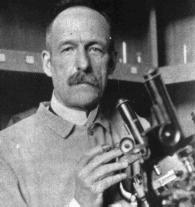1920
Jurisdiction over all land fur-bearing animals, except those of Alaska
and the Pribilof Islands, is transferred from the Bureau of Fisheries
(Commerce Department) to the Agriculture Department.
Mussels reared in lowa are successfully planted along the Potomac
River at Harpers Ferry, W.V.
Fire destroys the dining hall, kitchen, and laundry room of the Woods
Hole Laboratory
With cooperation of the Naval Aviation Service and Chesapeake Bay
fishermen, the Bureau inaugurates use of aeroplanes to locate
menhaden.
1921
The Albatross is decommissioned and retired from service on October
29th, but the scientific research into as well as the naming and
cataloging of the many hundreds of thousands of specimens it has
collected will continue for decades.
For the first time, Bureau of Fisheries scientists begin research to
determine fat contents of fish oils at its Washington D.C.,
laboratory. Such research would continue during 1926-30 at a Reedville
Va. laboratory on menhaden oil manufacture. Later Bureau research
would target the vitamin content of fish oils and other healthful and
nutritional attributes of fish oils.
Pacific salmon studies by Willis H. Rich, in cooperation with the
Oregon Fish Commission, begin on the Columbia River. Meanwhile, salmon
studies by Charles Gilbert begin in Bristol Bay and on Karluk River
and Karluk Lake in Alaska.
1922
Willis H. Rich former student of David Starr Jordan, becomes chief of
the Bureau's Division of Scientific Inquiry. He later heads the
Pacific Fishery Investigations at the Bureau's Stanford station and
is Director of the Montlake Laboratory in Seattle.
Over 180 million fish are rescued in the Mississippi Valley and
relocated from overflow ponds and lakes. The practice is abandoned in
1939 owing to improved flood control measures.
1923
Herbert F. Prytherch makes his first report on his work with
artificial propagation of oysters. He works in facilities provided
by the Connecticut Oyster Farms Company of Milford, CT. Increased
interest in molluscan culture for stock enhancement and direct sale
eventually leads to establishment of a full-scale research facility
at Milford, which is
still a laboratory of the NEFSC, concentrating
on pollution effects on marine life and molluscan and finfish
aquaculture.
1924
Congress passes the White Act in an effort to deal with the use of
fish traps in the Alaska salmon fishery. It sets a 50% escapement level
for streams where fish could be counted or reliably estimated giving
the Commerce Secretary authority to limit catches and set seasons, but
it does not allow the limitation of the amount of gear in the fishery.
Henny O'Malley, Bureau Comissioner and a member of the Halibut
Commission, sends Harlan Holmes to Seattle to find working space for
the Bureau. A small staff of Bureau employees work at the University of
Washington's Fisheries Hall Number 4 until construction of the Montlake
Laboratory is completed in 1931.

N.A. Cobb
N.A. Cobb begins to spend his summers working at Woods Hole fisheries
lab. Cobb was a world-known nematode specialist whose contributions
included many discoveries regarding these animals, as well as in the
taxonomy of nematodes. Cobb's outstanding contributions included using
these animals to study biological problems such as heredity, phylogeny,
adaptation, and parasitism.
1925

P.S. Galtsoff begins lifelong work on the American oyster
which culminates in the extensive classic "The American Oyster,"
published by the service in 1952.
1926
The Bureau's steamer Fish
Hawk is relinquished. Shortly after, the
Bureau obtains the ocean tug Patuxent from the Navy. It is renamed the
Albatross II and outfitted for research use.
1927
Elmer Higgins, former student of David Starr Jordan, becomes chief of
the bureau's Division of Scientific Inquiry.
1928
The Bureau begins studying problems and methods of fish passage at
various water diversion projects along the Pacific coast.
1929

Columbus Iselin (Became director of WHOI) in center,
O.E. Sette on right onboard Atlantis
O.E. Sette becomes director of the Fisheries lab and brings
his pioneering work tagging and reporting on the schooling of
mackerel.
New investigations begin on the sockeye salmon in Bristol Bay under
Alan Taft and on the Copper River under Seton Thompson. Investigations
on the pink salmon of southeastern Alaska begin under Fred Davidson.
Enforcement of Pacific salmon regulations is emphasized, and the
Bureau employs 228 agents using 24 vessels and the Bureau's first
airplane.
Planting of oak brush in Georgia's lower Duplin River proves successful
for collecting oyster spat.

Home